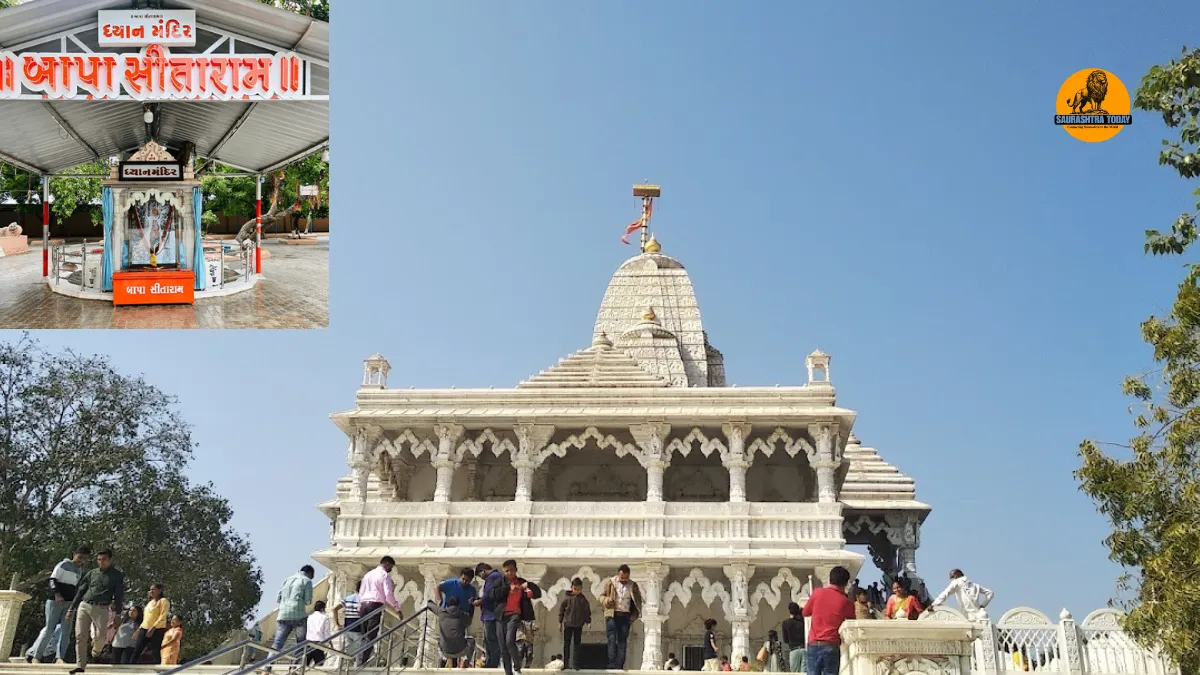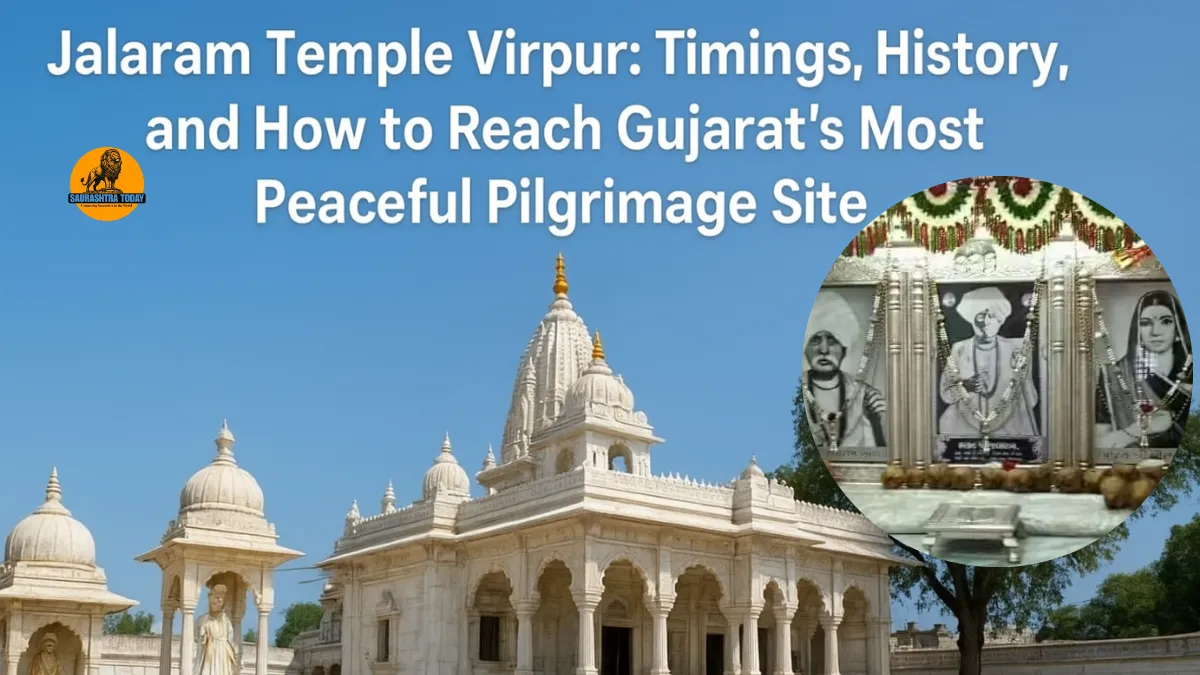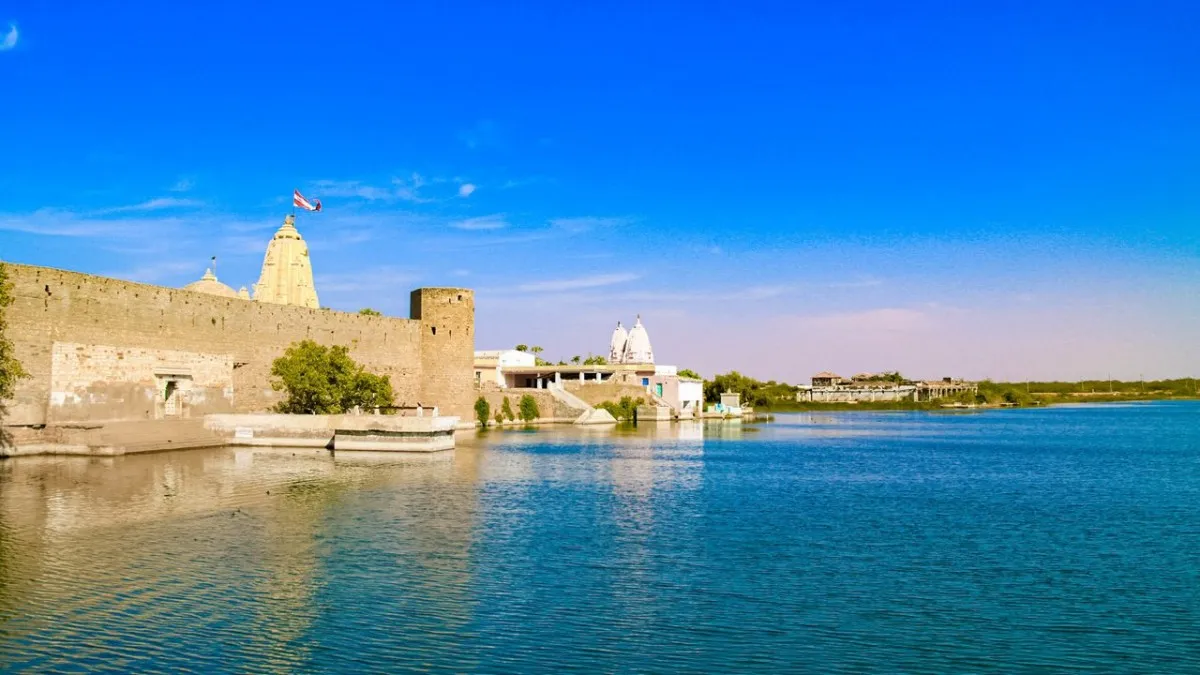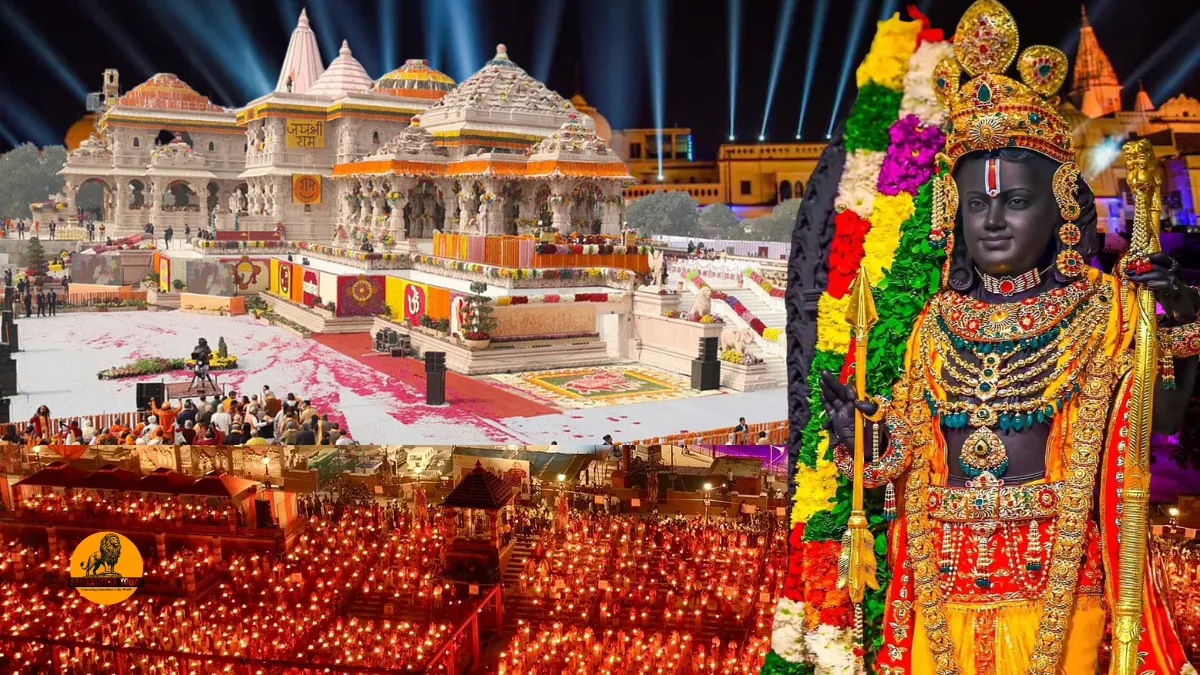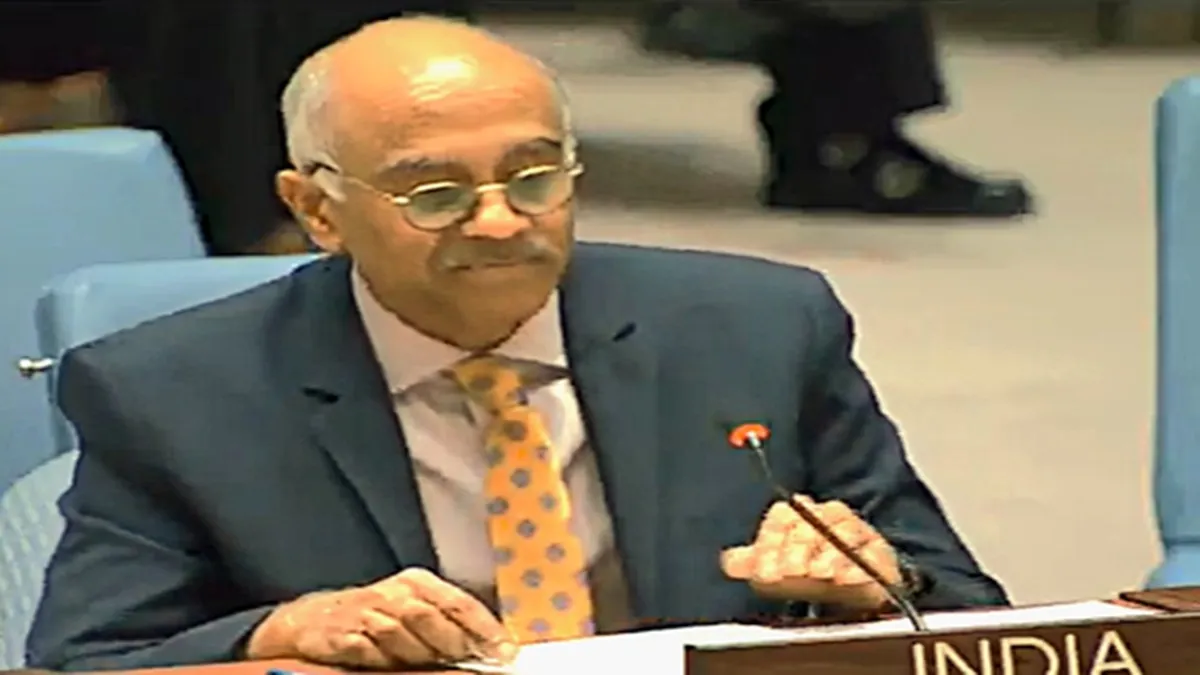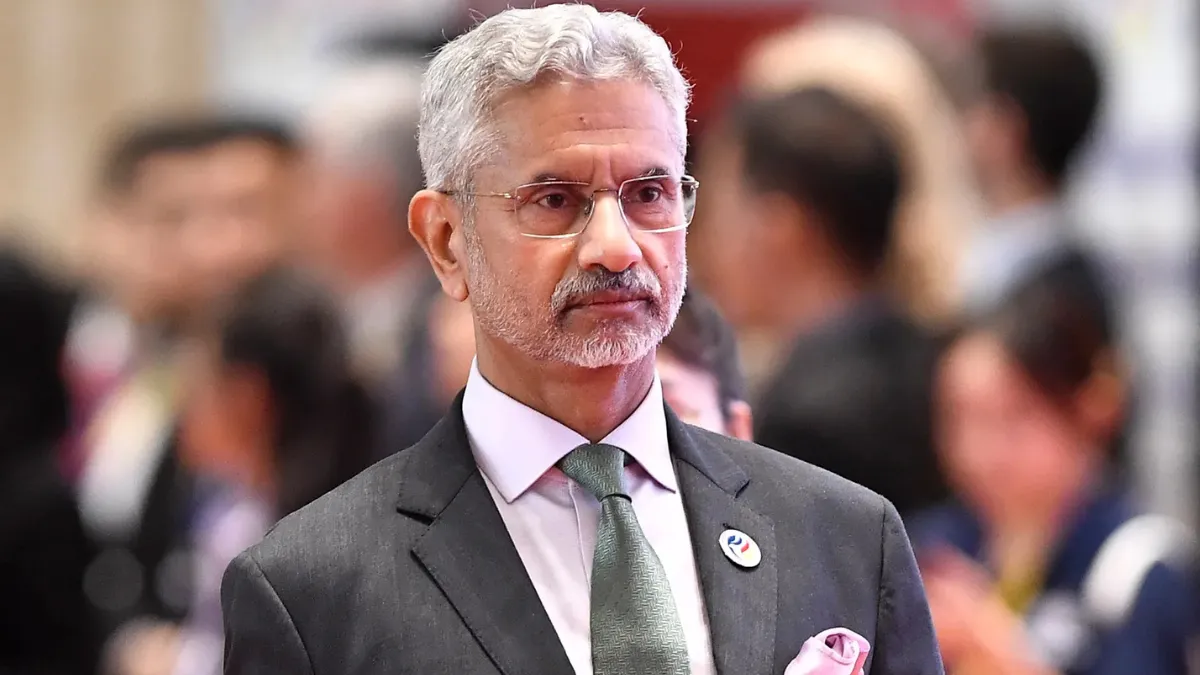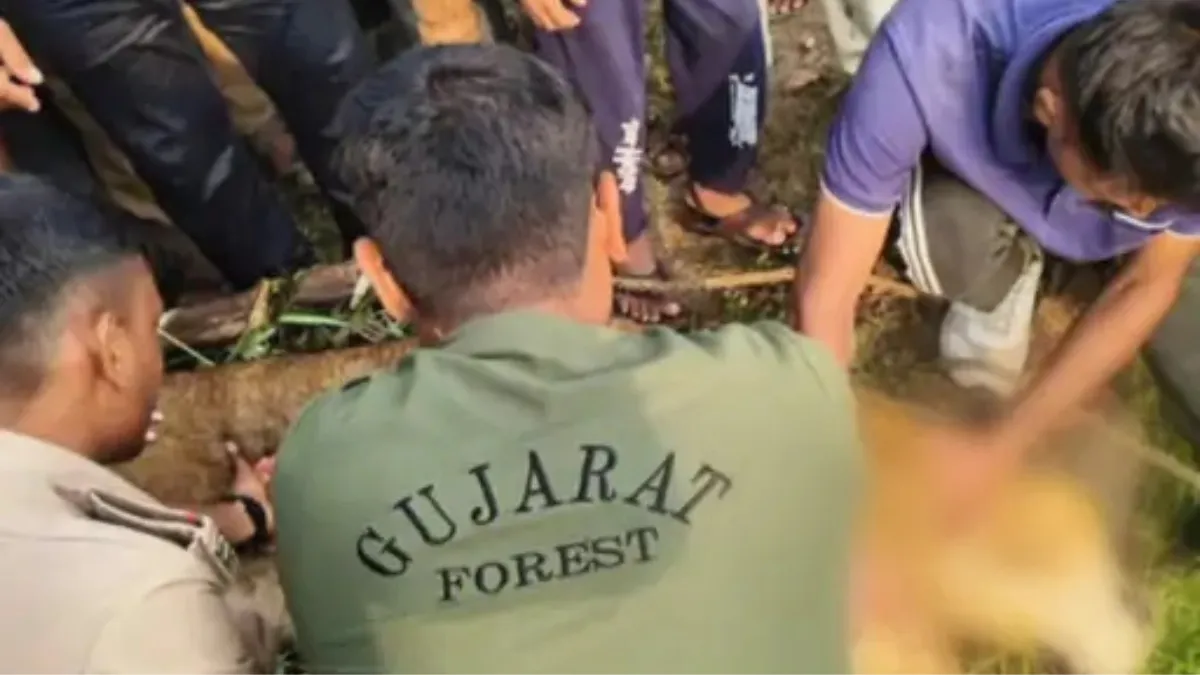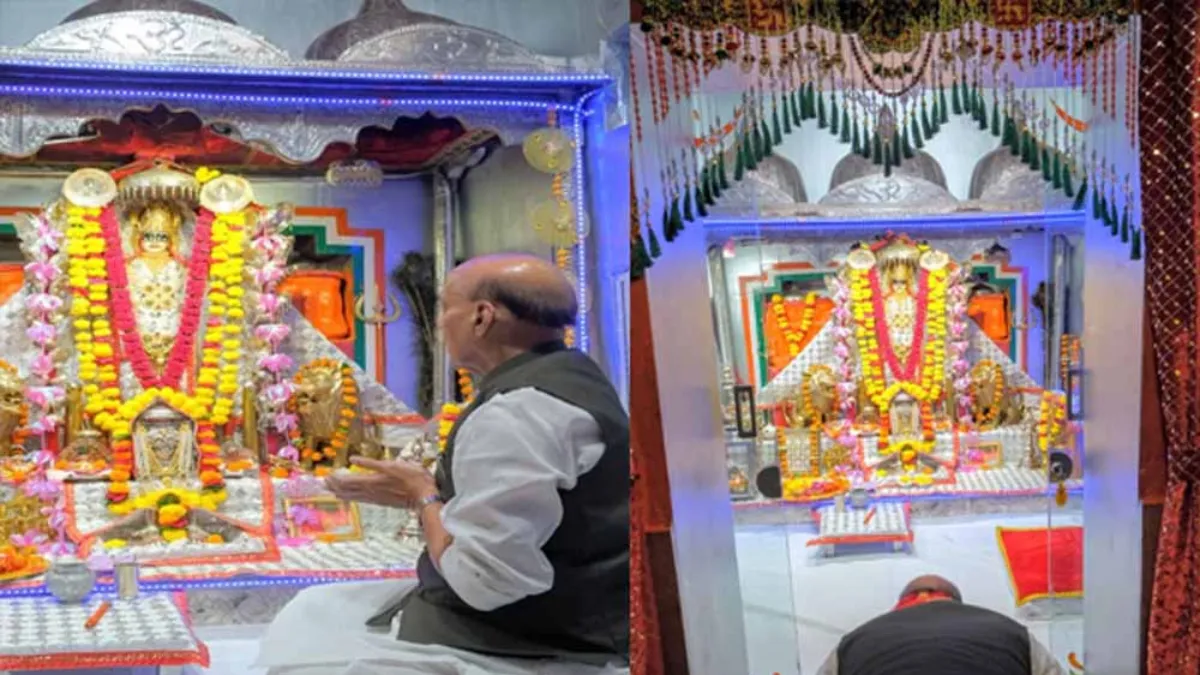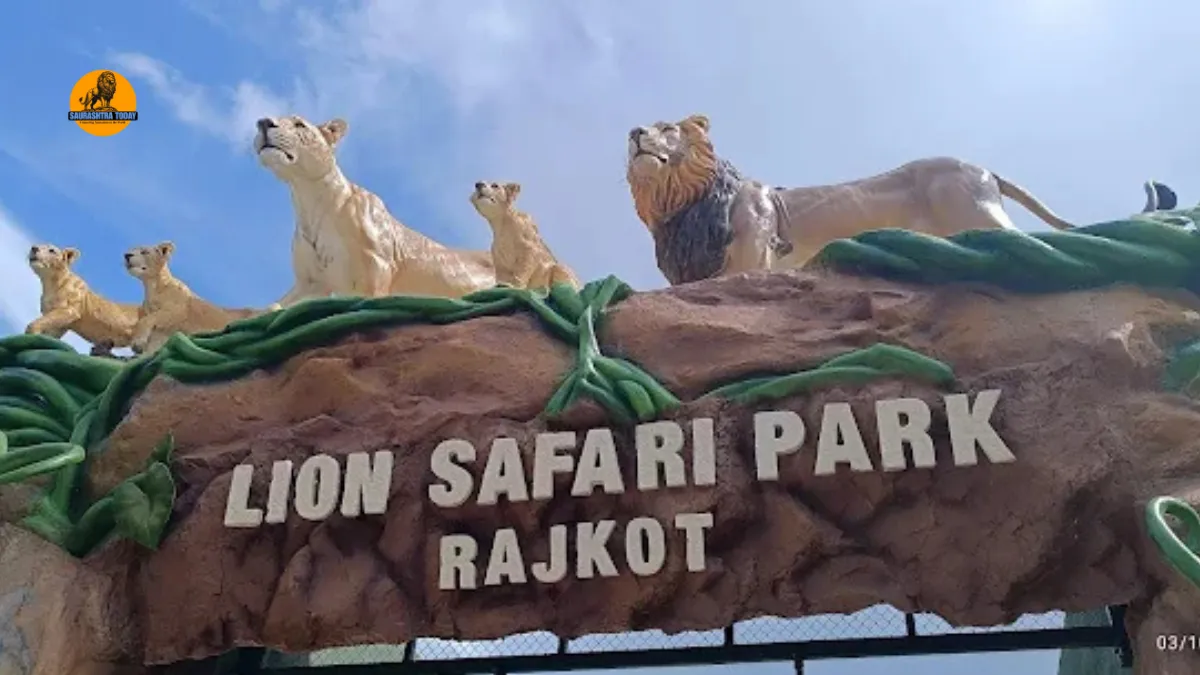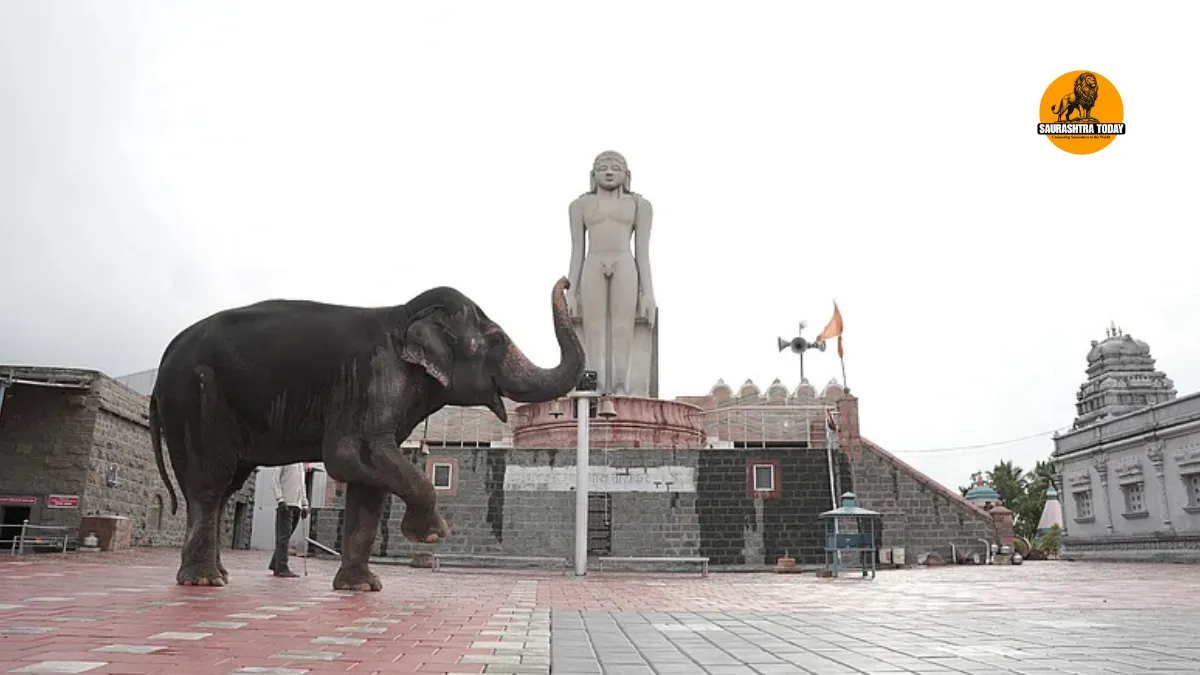Bhavnagar, a sacred land in Gujarat, has been home to many revered saints whose lives were devoted to spirituality, selfless service, and divine enlightenment. Among these holy souls, Bajrangdas Bapa holds a special place in the hearts of millions. Known for his deep devotion to Lord Hanuman and Lord Rama, Bajrangdas Bapa’s journey from humble beginnings to spiritual greatness continues to inspire countless devotees across India and abroad.
Birth and Early Life near Bhavnagar
Bajrangdas Bapa was born near Adhewada village, around six kilometers from Bhavnagar city, in Gujarat. His birthplace lies close to the famous Jhanzhariya Hanuman Temple, where his divine presence first manifested. His mother’s name was Shivkunvarba, and his father was Haridasji, who hailed from Lakhnaka village near Vallabhipur. The maternal side of his family belonged to Malpar village, near Budhel.
It was during a journey from Lakhnaka to Malpar that Bapa’s mother, Shivkunvarba, stopped near Adhewada to rest by a cremation ground. There were no modern roads or vehicles then—just dusty paths and long walks under the sun. As she rested near the shade of a small shelter, destiny unfolded.
When she reached the Jhanzhariya Hanuman Temple, she offered her prayers to Lord Hanuman and rested in a small room opposite the temple. It was there that the divine child—Bajrangdas Bapa—was born. Locals believe that Lord Hanuman himself manifested in human form that day.
The villagers served the mother with care and devotion, sensing something extraordinary about the newborn. After a few days, Shivkunvarba returned to Malpar. Many villagers were left wondering—Who was this divine child that appeared and departed so mysteriously? Their hearts whispered—perhaps Hanumanji himself had taken birth among them.
Bapa was given the name Bhaktiram, and he belonged to the Ramanandi sect, which follows the teachings of Lord Rama and his devotees.
A Childhood of Simplicity and Spiritual Calling
Bhaktiram spent his early years in Malpar and Lakhnaka, where he grew up under the care of his mother. Sadly, during his childhood, his father passed away—an event that deeply shaped his spiritual path.
As a young boy, Bhaktiram began wandering from village to village, eventually traveling toward Valsad in southern Gujarat. His journey was not of aimless wandering but of inner calling. Along the banks of the Auranga River, he often meditated beneath trees, chanting the divine name Sitaram, Sitaram with deep devotion.
Meeting with Saint Sitaramdas Bapu
During one of his meditations, Bhaktiram met Sitaramdas Bapu, a respected saint leading a group of devotees known as the Khakh Chowk Jamat. This group was traveling toward Nasik Kumbh Mela, a major Hindu pilgrimage that occurs every twelve years.
Impressed by the young boy’s devotion and purity, Sitaramdas Bapu took him along. During this journey, Bhaktiram witnessed one of the most miraculous moments of his life—a divine encounter with wild tigers.
The Miracle Among the Tigers
As the group moved through a dense forest on elephants and horses, a pack of eight to ten tigers suddenly appeared in front of them. The animals growled fiercely, blocking their path. Even the elephants froze in fear.
At that critical moment, Sitaramdas Bapu called out to Bhaktiram. The young boy walked forward without fear and began chanting praises of Lord Narasimha, the lion-man incarnation of Lord Vishnu.
Miraculously, as his chants filled the forest, the tigers calmed down, lowered their heads, and peacefully walked away. Everyone present was astonished. It was then that Sitaramdas Bapu realized the boy was no ordinary child—he was divinely chosen. From that moment, Bhaktiram came to be known as Bajrangdas Bapa, a name symbolizing his unshakable faith in Bajrangbali (Lord Hanuman).
Pilgrimages and Spiritual Journey
After the Kumbh Mela at Nasik, Bajrangdas Bapa continued his spiritual travels. He visited Vejalpur and later Surat, where he developed a deep connection with the Ashwinikumar Ghat along the Tapi River.
Every day, Bapa would buy a rose flower from a small florist near the railway station, hire a horse cart, and travel to the ghat. There, he would take a small boat ride on the Tapi River, offering the rose to the sky in devotion to Ashwinikumar, the celestial physicians of the gods. This act symbolized purity, love, and divine healing.
People who saw him performing this daily ritual were deeply moved by his serenity and silent prayers. His simple life and constant remembrance of God attracted many followers who began seeking his blessings.
Settling in Bagdana – The Land of Divine Peace
From Surat, Bajrangdas Bapa eventually traveled to Vallabhipur, Dhosa, and then Palitana, one of the holiest towns of Jainism. From there, he reached Bagdana, a small village in the Mahuva Taluka of Bhavnagar district.
It was in Bagdana that Bapa finally chose to settle and begin his spiritual service to mankind. He made his simple abode in front of the old police lines, setting up his seat (asana) in a public square.
Bapa lived a life of utmost simplicity. He wore unwashed coarse cotton clothes, sat near a sacred fire (dhuni), and kept a pot of water and a glass by his side. He never followed strict rituals, fasting, or ceremonial worship—his only practice was devotion from the heart. He believed in pure love for God rather than external display of religion.
Establishing the Ashram and Temple at Bagdana
At Bagdana, Bajrangdas Bapa built his ashram near the Bagdeshwar Mahadev Temple. He also established and consecrated the idol of Lord Shiva there through a sacred ceremony known as pran-pratishtha.
The ashram soon became a spiritual center, drawing devotees from far and wide. Every Guru Purnima, thousands of followers gather at Bagdana to celebrate Bapa’s legacy with devotion, music, and prayers.
Moreover, on every full moon day (Poonam), devotees from different parts of Gujarat visit Bagdana to seek Bapa’s blessings. The energy of the place is serene and uplifting—many claim that even today, Bajrangdas Bapa’s presence can be felt there in the gentle sound of the wind and the calmness of the temple bells.
Also read: Jalaram Temple Virpur: Darshan Timings, Temple History & Travel Route
Devotion to Lord Rama and Hanuman
Bajrangdas Bapa’s spiritual essence was rooted in his unwavering devotion to Lord Rama and Lord Hanuman. His constant chant—Sitaram, Sitaram—became his life’s breath.
Bapa often said that repeating God’s name with love can burn away sins and bring peace to the soul. His teachings emphasized compassion, truth, simplicity, and universal brotherhood. He saw no boundaries of religion or caste—only the shared divinity within every living being.
Legacy and Faith That Lives On
Today, Bajrangdas Bapa’s ashram at Bagdana stands as a beacon of faith and spiritual comfort for thousands. His followers believe that visiting Bagdana with pure devotion can heal the heart and purify the mind.
Temples dedicated to Bajrangdas Bapa have also been established in various parts of Gujarat and across India, ensuring that his message of divine love continues to spread. His life reminds us that spirituality is not about rituals, but about living with humility, love, and surrender to God.
Also read: Umiya Mata Temple Unjha: A Sacred Heritage of Gujarat
Why the History of Bajrangdas Bapa Matters Today
In today’s fast-paced world, where material desires often overshadow spiritual values, the history of Bajrangdas Bapa serves as a timeless lesson. His journey from a humble village child to a revered saint symbolizes faith’s power to transcend all hardships.
For devotees in India, the United States, and the United Kingdom, learning about Bapa’s life offers a glimpse into the rich spiritual heritage of Gujarat. His story is not just religious—it’s inspirational, reminding us that divine grace can manifest even in the simplest souls.
Conclusion: The Eternal Flame of Faith
The History of Bajrangdas Bapa is a testament to unwavering devotion, simplicity, and divine strength. Born near Bhavnagar under extraordinary circumstances, he walked fearlessly among wild beasts, lived humbly among people, and dedicated every breath to chanting the name of the Lord.
Even decades after his earthly journey, the flame he lit continues to guide seekers of truth. His teachings echo in every corner of Bagdana—inviting all to live a life of peace, humility, and devotion to God.
